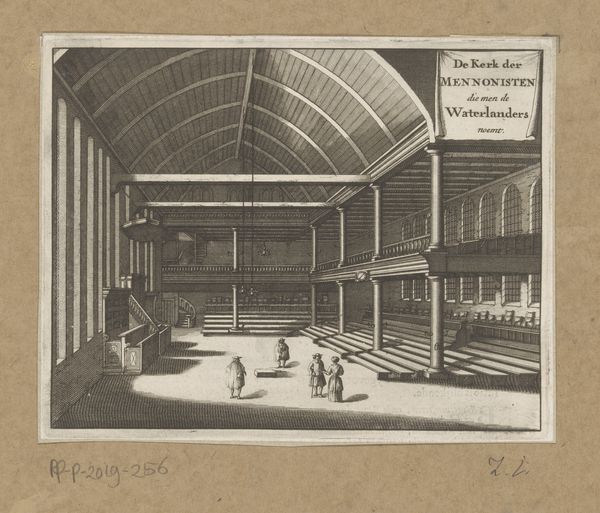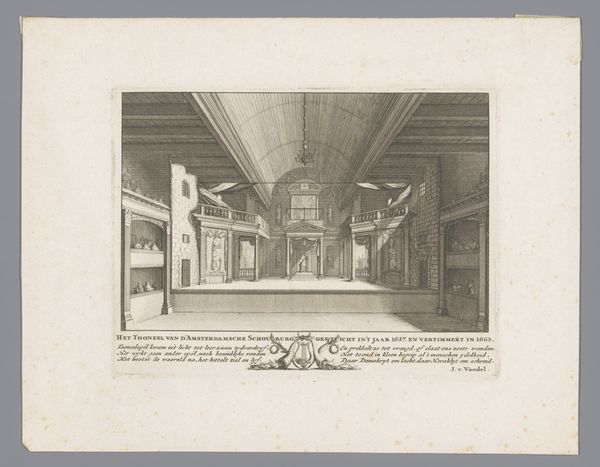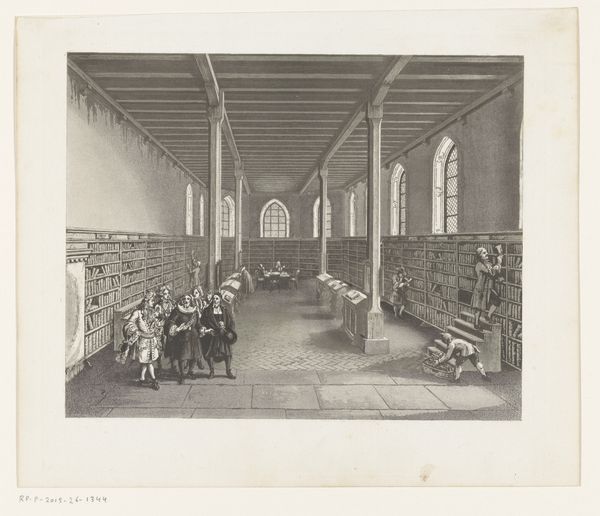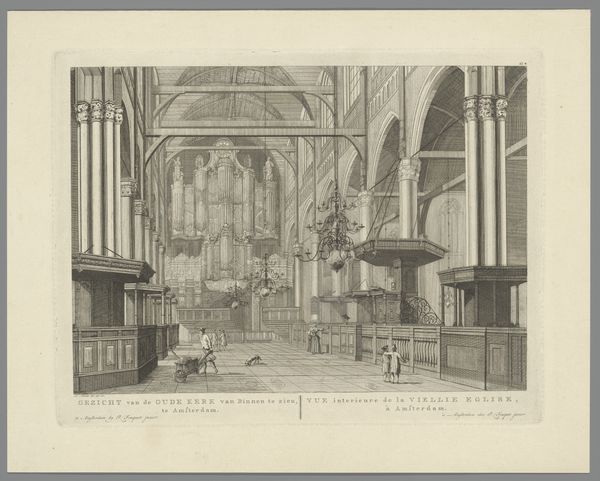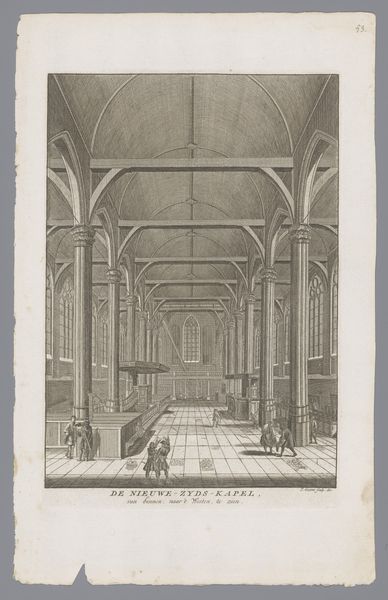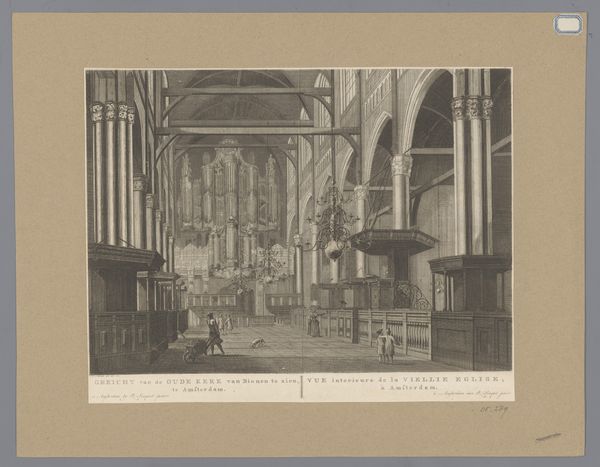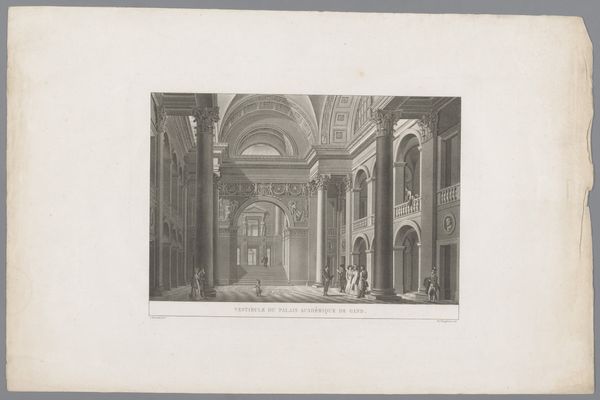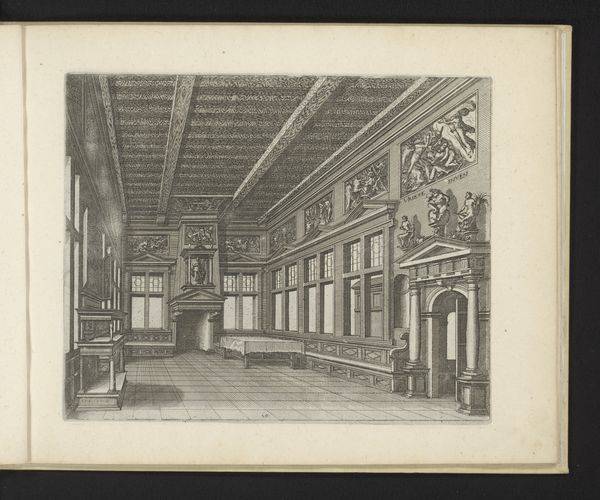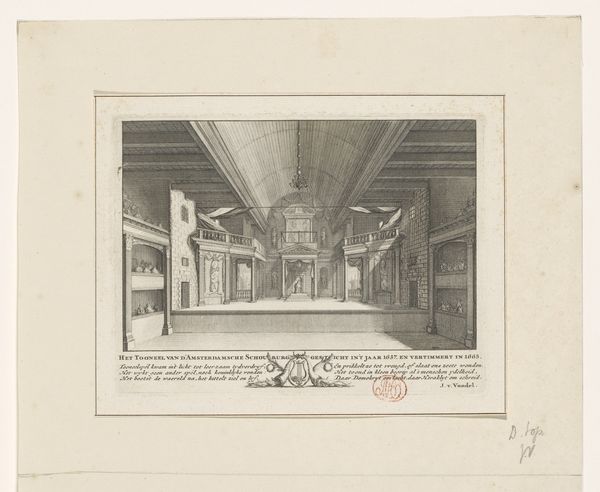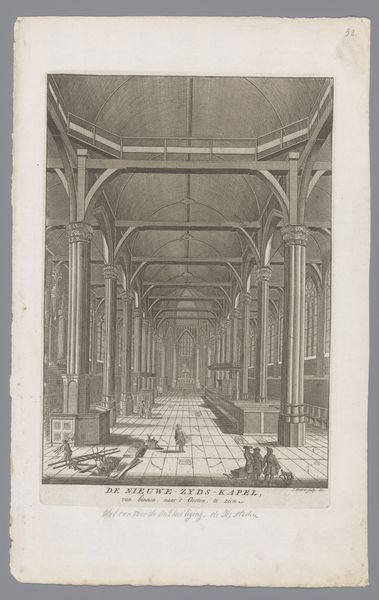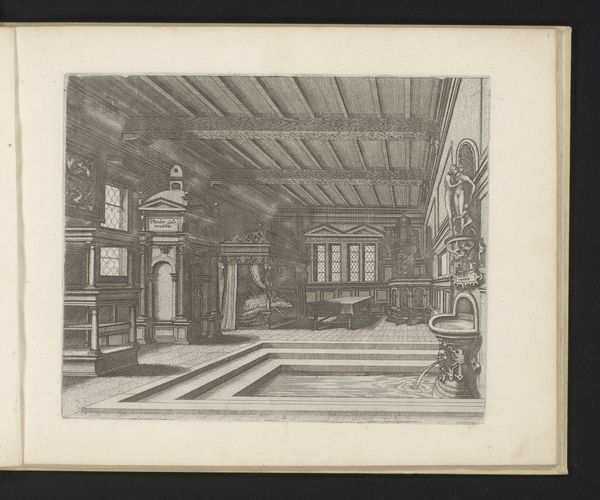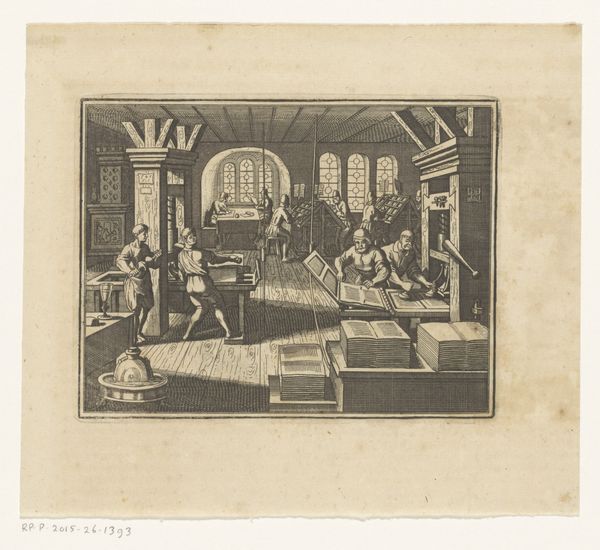
print, engraving
#
dutch-golden-age
# print
#
perspective
#
cityscape
#
genre-painting
#
engraving
Dimensions: height 120 mm, width 152 mm
Copyright: Rijks Museum: Open Domain
Curator: The perspective in this engraving really draws you in. Editor: It feels very… sterile. Look at that cool tonality; what a study in the production of architectural space, and particularly interesting as it emphasizes the plainness of the architecture. Curator: This is "Interieur van de Doopsgezinde kerk De Zon te Amsterdam," or "Interior of the Mennonite Church De Zon in Amsterdam." It’s difficult to pinpoint the exact year it was made but we can date it to sometime between 1693 and 1726, currently residing here at the Rijksmuseum. Editor: It’s intriguing how the print medium replicates the interior’s dedication to light and geometry. We know from social histories that these Mennonite churches, as spaces of dissenter communities, really pushed a minimalist aesthetic, a refusal of opulence to signal their own spiritual convictions. This architectural choice then creates opportunities for a kind of democratization, or… maybe a particular ideology… for religious practice. Curator: Exactly, and what you're seeing here, too, is the precision afforded by the engraving process itself, allowing for that crisp articulation of spatial relationships within the church. It feels both accurate and deeply constructed. You can imagine the labor of the artisans behind it; they likely wanted to highlight how they also were contributing members of the community through their specialized skillset, outside of their beliefs. Editor: Which really pushes us to consider print culture in the 17th and 18th centuries—as an economy of visual representation and as an index of labor beyond the so-called "fine arts." Who made this piece, and how does that complicate the very concept of authorship and artistry? Curator: These are the very important questions we need to consider to continue understanding this fascinating depiction. The production and materials used and their accessibility to everyday consumers are all relevant in studying such pieces. Editor: Precisely, let’s always ask ourselves how context shapes our viewing of this image. Curator: Exactly!
Comments
No comments
Be the first to comment and join the conversation on the ultimate creative platform.
